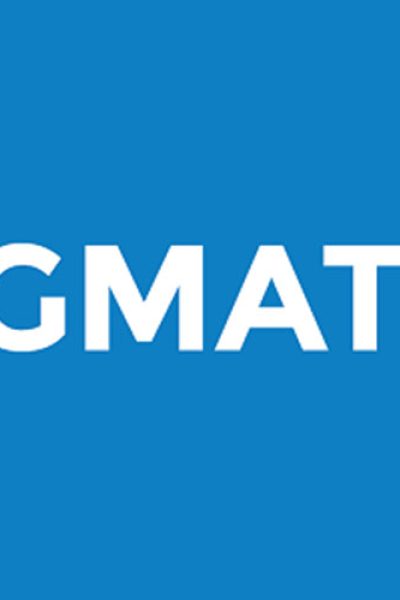IELTS
The International English Language Testing System (IELTS) is an internationally owned and globally recognized direct English language assessment of the highest quality and integrity readily available throughout the world. IELTS test is a highly dependable, practical and valid English language assessment primarily used by those seeking international education, professional recognition, bench-marking to international standards and global mobility. IELTS exam is owned, developed and delivered through the partnership of the British Council, IDP: IELTS Australia and the University of Cambridge ESOL Examinations. IELTS test helps students show their ability to take the courses in English. The universities – mostly from UK, Canada, and Australia, seek for IELTS test report as an admission requirement. The score that students must obtain for eligible in the University depends upon the course and the university chosen.
1. LISTENING
Duration and format: The Listening Module takes around 30 minutes. There are 40 questions. There are four sections. The Listening Module is recorded on a CD and is played ONCE only. During the test, time is given for candidates to read the questions and write down and check their answers. Answers are written on the Question Paper as candidates listen. When the recording ends ten minutes are allowed for candidates to transfer their answers to an Answer Sheet.
Task types
The first two sections are concerned with social needs. There is a conversation between two speakers and then a monologue. For example – a conversation about travel arrangements or decisions on a night out, and a speech about student services on a University campus or arrangements for meals during a conference. The final two sections are concerned with situations related more closely to educational or training contexts. There is a conversation between up to four people and then a further monologue. For example – a conversation between a tutor and a student about an assignment or between three students planning a research project, and a lecture or talk of general academic interest. A range of English accents and dialects are used in the recordings which reflects the international usage of IELTS exam. A variety of questions are used, chosen from the following types:
- multiple choice
- short-answer questions
- sentence completion
- notes/summary/diagram/flow-chart/ table completion
- labeling a diagram which has numbered parts
- classification
- matching
Marking and Assessment
One mark is awarded for each correct answer in the 40 item test.
A confidential band score conversion table is produced for each
version of the Listening Module, which translates scores out of
40 into the IELTS 9-band scale. Scores are reported as a whole
band or a half band. Care should be taken when writing answers on the Answer Sheet as poor spelling and grammar are penalized.
2. READING
Duration and format: The Reading Module takes 60 minutes. There are 40 questions, based on three reading passages with a total of 2,000 to 2,750 words. Texts and questions appear on a Question Paper which candidates can write on but not remove from the test room. All answers must be entered on an Answer Sheet during the 60-minute test. No extra time is allowed to transfer answers.
Task Types
A variety of questions are used, chosen from the following types:
- multiple choice
- short-answer questions
- sentence completion
- notes/summary/diagram/flow-chart/ table completion choosing from a ‘heading bank’ for identified paragraphs/
- sections of the text identification of writer’s views/claims
- yes, no or not given
- identification of information in the text
- yes, no or not
- given/true, false or not given
- classification
- matching lists/phrases
Academic Reading: Texts are taken from magazines, journals, books, and newspapers. Texts have been written for a non-specialist audience. All the topics are of general interest. They deal with issues which are interesting, recognizably appropriate and accessible to candidates entering undergraduate or postgraduate courses or seeking professional registration. At least one text contains detailed logical argument. One text may contain non-verbal materials such as diagrams, graphs or illustrations. If texts contain technical terms then a simple glossary is provided.
Marking and assessment: One mark is awarded for each correct answer in the 40 item test. A Band Score conversion table is produced for each version of the Reading Module which translates scores out of 40 into the IELTS 9-band scale. Scores are reported as a whole band or a half band. Care should be taken when writing answers on the Answer Sheet as poor spelling and grammar are penalized.
3. WRITING
Duration and format: The Writing Module takes 60 minutes. There are two tasks to complete. It is suggested that about 20 minutes is spent on Task 1 which requires candidates to write at least 150 words. Task 2 requires at least 250 words and should take about 40 minutes. Candidates may write on the Question Paper but this cannot be taken from the test room and will not be seen by the examiner. Answers must be given on the Answer Sheet and must be written in full. Notes are not acceptable as answers.
Task Types
Academic Writing
In Task 1 candidates are asked to describe some information (graph/table/chart/diagram), and to present the description in their own words. Depending on the type of input and the task suggested, candidates are assessed on their ability to:
- organize, present and possibly compare data
- describe the stages of a process or procedure
- describe an object or event or sequence of events
- explain how something works
In Task 2 candidates are presented with a point of view or argument or problem. Candidates are assessed on their ability to:
- present the solution to a problem
- present and justify an opinion
- compare and contrast evidence, opinions and implications
- valuate and challenge ideas, evidence or an argument
The issues raised are of general interest to, suitable for and easily understood by candidates entering undergraduate or postgraduate studies or seeking professional registration.
4. SPEAKING
The Speaking Module takes between 11 and 14 minutes and consists of an oral interview between the candidate and an examiner. All interviews are recorded. The overall structure of the test is summarized below.
Task Types
There are three main parts. Each part fulfils a specific function in terms of interaction pattern, task input and candidate output. In Part 1 candidates answer general questions about themselves, their homes/families, their jobs/studies, their interests, and a range of familiar topic areas. This part lasts between four and five minutes. In Part 2 the candidate is given a verbal prompt on a card and is asked to talk on a particular topic. The candidate has one minute to prepare before speaking at length, for between one and two minutes. The examiner then asks one or two rounding-off questions. In Part 3 the examiner and candidate engage in a discussion of more abstract issues and concepts which are thematically linked to the topic prompt in Part 2. The discussion lasts between four and five minutes. The Speaking Module assesses how effectively candidates can communicate in English.
Part Nature of interaction Timing
Part 1: Introduction Examiner introduces him/herself and interview and confirms candidate’s identity. (4/5minutes ) Examiner interviews candidate using verbal questions selected from familiar topic frames.
Part 2: Individual long Examiner asks candidate to speak 3/4 turn for 1/2 minutes on a particular minutes topic based on written input in the (incl. 1 form of a candidate task card and minute content-focused prompts. Examiner preparation asks one or two questions to round- time) off the long turn.
Part 3: Two-way Examiner invites candidate to 4/5 discussion participate in discussion of a more minutes abstract nature, based on verbal questions thematically linked to Part 2 topic. Research has shown that the speech functions which occur regularly in a candidate’s output during the Speaking Test are:
- Providing personal information Expressing a preference
- Providing non-personal information Comparing
- Expressing opinions Summarizing
- Explaining Conversation repair
- Suggesting Contrasting
- Justifying opinions Narrating and paraphrasing
- Speculating Analyzing
Other speech functions may emerge during the test, but they are not forced by the test structure.
Marking and assessment IELTS examiners all hold relevant teaching qualifications and are recruited as examiners by the test centers and approved by British Council or IDP:IELTS Australia. Detailed performance descriptors have been developed which describe spoken performance at the nine IELTS bands, based on the following criteria. Scores are reported as whole bands only.
Fluency and Coherence refers to the ability to talk with normal levels of continuity, rate and effort and to link ideas and language together to form coherent, connected speech. The key indicators of fluency are speech rate and speech continuity. The key indicators of coherence are logical sequencing of sentences, clear marking of stages in a discussion, narration or argument, and the use of cohesive devices (e.g. connectors, pronouns and conjunctions) within and between sentences.
Lexical Resource refers to the range of vocabulary the candidate can use and the precision with which meanings and attitudes can be expressed. The key indicators are the variety of words used, the adequacy and appropriacy of the words used and the ability to circumlocution (get round a vocabulary gap by using other words) with or without noticeable hesitation.
Grammatical Range and Accuracy refers to the range and the accurate and appropriate use of the candidate’s grammatical resource. The key indicators of grammatical range are the length and complexity of the spoken sentences, the appropriate use of subordinate clauses, and the range of sentence structures, especially to move elements around for information focus. The key indicators of grammatical accuracy are the number of grammatical errors in a given amount of speech and the communicative effect of error.
Pronunciation refers to the ability to produce comprehensible speech to fulfill the speaking test requirements. The key indicators will be the amount of strain caused to the listener, the amount of the speech which is unintelligible and the notice ability of L1 influence.
TEST PREPARATION







